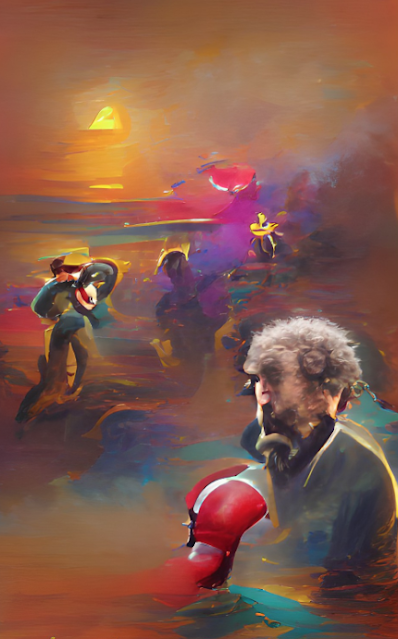 |
| The Future and the Past. (Produced w/Photoleap) |
Kazui Ishiguro's book Klara and the Sun explores many of the issues associated with AI-powered robotics, and lots of digital ink has been spilled writing about the latest iterations of an AI writing program called ChatGPT.
In the art realm I have likewise been fascinated by a pair of programs that utilize AI to create illustrations and images. At the end of this page I will include links to some of the above essays and explorations.
ChatGPT is not yet perfect. I asked it to write a short essay about the Duluth music scene and it included a venue that is shuttered and has been so for two or three years.
Till an hour ago I essentially asked it questions and ChatGPT produced short essays. Then I asked it to write a poem for me on Nothingness. Here's what the machine produced.
A Poem About Nothingness
Nothingness, a vast and empty space
Where thoughts go to be erased
No sound, no light, no time, no place
Just an endless, blank erasing
A void of emptiness, a lack of form
A space that's never-ending
No beginning, no end, no seed, no norm
Just a boundless, endless, never-mending
No memories, no dreams, no hope, no fears
Just a limitless, endless, boundless, never-clearing
No past, no present, no future, no tears
Just a timeless, spaceless, endless, never-appearing
Nothingness, a realm of pure oblivion
Where all is lost and nothing is given
A realm of pure and utter nothingness
Where nothing exists and nothing is living
* * *
Things I especially like about the poem include the assonance (e.g., oblivion / given) and also the structure. Notice the third line of each of the first three stanzas, and then a slight variation as we reach the conclusion.
The opening grabbed me right off. "Nothingness, a vast and empty space where thoughts go to be erased." It's not an image that would immediately pop into my head.
What do you think? I find it fascinating.
Related Links
My 2016 review of Surviving AI by Calum Chace
A Visit with Futurist Calum Chace on His New Book The Economic Singularity
Two Versions of The Comet, Light and Dark
Ishiguro's Klara and the Sun Is Another Stellar Achievement
I've also been collaborating with a pair of AI "art" bots. You can see some of the things "we" have created here on my Instagram page.




































.jpeg)










